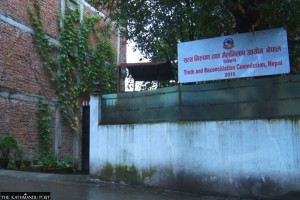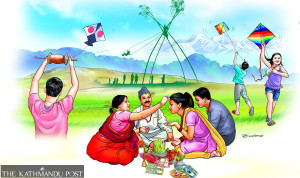Miscellaneous
Expanding ecotourism
Ghandruk, a picturesque village situated along the famous Annapurna Circuit, attracts thousands of tourists every year.
Pragati Shahi
Ghandruk has gotten it done owing not only to its stunning scenery but because the village, situated at an altitude of over 2,000 metres above sea level, resolutely stuck to its famed ecotourism plan. In fact, Ghandruk is a living testimony to how a rural tourism scheme that engages the local community helps fulfill the twin goals of nature-preservation and community development.
Like many other poverty-ridden rural and remote villages scattered across the country, Ghandruk was once a typical cluster of Gurung hamlets without basic amenities such as road access, electricity and sanitation facilities, among others, until the launch of the Annapurna Conservation Area Project (ACAP) in 1986.
Initially, ACAP started as a pilot ecotourism project pioneered by the late Chandra Bahadur Gurung, a local from Sikles, Kaski, who later went to become an acclaimed intellectual and conservationist who called for putting locals at the forefront of decision-making while promoting nature preservation. The bottom-up people-centric approach implemented inside the ACAP region was lauded not only by the local planners but also around the world. That approach was a stark contrast to the existing government model implemented to set up protected areas like Chitwan National Park in 1973 and Sagarmatha National Park in 1976 and many other national parks and wildlife reserves set up during the period between 1970 and the mid-1980s. The government’s model focused only on conservation, failing to take into account the need to economically empower the locals along with improving conservation practices. ACAP, on the other hand, had a vision of motivating, engaging and empowering local communities to protect their scenic areas, while at the same time allowing them to benefit off the conserved areas and enhancing their livelihoods.
Ecotourism constitutes the backbone of the economy in the Annapurna region, and today the region boasts dozens of rural villages like Ghandruk. From the handful of visitors that the place would see in the early 70s, the conservation area now attracts over 100,000 tourists annually. Many of them come here because the villages have hotels and lodges with amenities such as round-the-clock Wi-Fi connectivity, and the houses in the homestay hamlets are comfortable and clean.
Unfortunately, the practices implemented inside ACAP have not been adopted in many other parts of the country. Besides a few destinations, including protected areas such as Chitwan National Park, Bardiya National Park and some sites in the Khumbu region and Langtang, other places have not seen ecotourism take off.
That’s not for lack of potential and resources in other areas.
“Nepal’s ecotourism model is unique compared to other countries that have adopted similar models,” says Hum Gurung, a local conservation leader from Sikles. “While many countries are focusing only on nature preservation as a tool to promote ecotourism, we have a rich culture, many ethnic communities and local participation to showcase for the tourists and attract them.”
Gurung, who now works as senior policy advisor for an ecosystem based adaptation project for the United Nations Development Programme (UNDP), further adds, “Nepal is comparatively at an advantage compared to other countries because of our cultural treasures.”
However, there are still many challenges to overcome in promoting, strengthening and sustaining the ecotourism approach on a wider scale. “First and foremost, there is no clear-cut policy and investment framework created by the government to promote and develop ecotourism destinations,” says tourism expert Ram Chandra Sedhai, who is associated with the South Asia Tourism Infrastructure Development Programme funded by the Asian Development Bank.
The promotion of, investment in and development of the various potential touristic areas are still lacking in the country. Sedhai, who was also involved in the tourism sector in Vietnam, says that Nepal’s ACAP model has been adopted in Vietnam. to much success. Vietnam now draws around seven million tourists per year, while the number in Nepal is hardly 800,000.
There’s also the problem of unplanned and short-sighted development activities, including newly constructed roads replacing the traditional routes, as has been the case in Upper Mustang. These undertakings have sometimes led to a drying up of touristic activities in the villages that earlier used to accommodate tourist trekkers, according to some tourism entrepreneurs who promote ecotourism.
“There are also relatively unexplored areas such as the Khaptad area and the Rara region that need attention and need to be promoted as ecotourism destinations, but the government and private sector have failed to work on them,” says Gurung. Nepal also needs to start attracting high-end tourists who wouldn’t mind spending more to live in the midst of nature and enjoy quality tourism packages—this would help the social and economic development of the locals who are already dependent on the natural resources to make a living.
“Besides attracting tourists to the protected areas, trekking destinations and mountaineering expeditions, it is also high time we involved the private sector in marketing and promoting alternative destinations in different parts of the country,” says Gurung.
“We need to also train, empower and engage more local communities to act as hosts to the tourists, as per the homestay model,” says Sedhai. “We need to teach more villages to focus on quality tourism and strike a balance between nature conservation and community development. The concepts of eco-villages and home-stays should be expanded to a lot more corners of Nepal.”




 25.34°C Kathmandu
25.34°C Kathmandu












